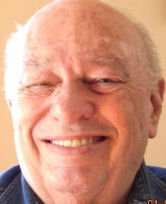Dr. William Hurwitz, a pioneering pain physician, was tried and convicted of violating the Controlled Substances Act -- which is intended to curb the illicit use of drugs -- and is serving a 25-year term in federal prison. He was also fined $2 million.
These are but two of hundreds of cases in which, in its zeal to stamp out the illegal drug use, the U.S. Drug Enforcement Administration (DEA) is cracking down on doctors who prescribe medications to relieve chronic pain, and the patients who depend on these drugs to live normal lives.
Hundreds of physicians have been put on trial for charges ranging from health insurance fraud to drug distribution, even to manslaughter and murder for over-prescribing prescription narcotics. Investigators have also seized doctors? homes, offices, and bank accounts, leaving them with no resources for their defense.
Drug diversion means the diversion of legal drugs for illicit purposes. Prescription drug abuse accounts for almost 30% of the overall drug problem in the United States, representing a close challenge to cocaine addiction. Sometimes these diverted prescription drugs end up for sale on the street, where they reap large profits for traffickers.
Starting in the mid-1990s, and ratcheting up in 2001, the DEA -- part of the U.S. Department of Justice (DOJ) -- has been leading an aggressive effort to eradicate the illegal "diversion" of certain prescription painkillers. A particular target has been OxyContin, one of a class of drugs known as opioids, which was aggressively marketed by its manufacturer, Purdue Pharma.
In 2001, the DEA launched a campaign called the "OxyContin Action Plan?. The DEA says the plan is necessary due to increasing abuse of prescription drugs, particularly by youth. The agency, which has teamed up with state and local authorities, typically employs law enforcement methods developed in the government?s ?War on Drugs?, including aggressive undercover investigation, asset forfeiture, and informers. It says its goal is to stop violations of the Controlled Substances Law.
But critics charge that the DEA has focused too narrowly on doctors, exacerbating the already widespread problem of untreated or under-treated pain. As a result, well-meaning doctors are finding themselves subject to costly, potentially career-ending investigations. Several doctors and many of their patients have already been sent to prison.
The DEA maintains that only ?criminal doctors? are being targeted, and that its efforts to prevent the sale of prescribed medications have no effect on the legitimate treatment of pain.
The pain-management community disagrees. Authorities say the DEA program reportedly is having a chilling effect on physicians, who are leaving their pain management specialties for safer practices, and on their patients, many of who literally cannot function without medication. The Village Voice newspaper reports that medical schools are now advising students to avoid pain management practice altogether.
Ironically, the DEA crackdown comes at a time when the medical profession knows more than ever about how to treat the chronic pain that makes life intolerable ? sometimes impossible ? for the estimated 50 to 70 million Americans who live in chronic disabling pain.
Until about 20 years ago, the medical profession knew little about pain management. Today, pain management has become a recognized medical specialty, and it is estimated that there are some 5,000 pain management doctors practicing in the U.S.
The DEA?s programs also come at a time when there are more effective pain-killing drugs on the market and when the Internet makes it easier than ever to obtain them.
The DEA?s dilemma is separating legitimate prescribers and users from drug dealers. And the DEA?s task is made more difficult, not only by its zeal, but by the fact that those investigating and prosecuting are not doctors but lawyers and law enforcement agents.
Before he was ever charged with a crime, Dr. Hurwitz recommended that the DEA ?suspend current prosecutions against physicians who treat pain unless and until a review by a panel of nationally recognized experts in medical pain management has found that there is an absence of good faith by the physician. If only the physician's adherence to standards of care can be questioned, then the case is not an appropriate one for the criminal process, and should be referred to the professional regulatory authorities,? he said.
(Note: You can view every article as one long page if you sign up as an Advocate Member, or higher).





